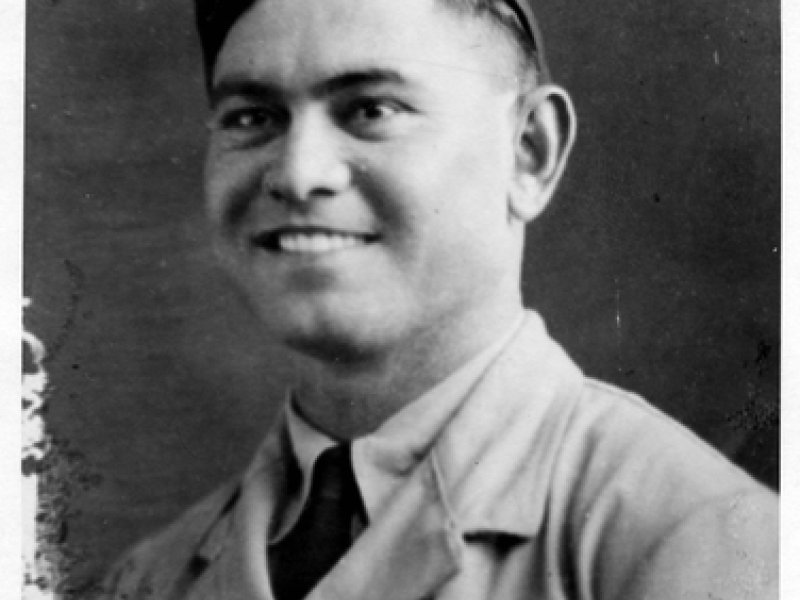Flight Sergeant Arnold Lockyer, No. 24 Squadron RAAF
Arnold Alexander Lockyer was born in May 1915 to Horace Samuel and Sylvie Lockyer (née Whalebone), of Mallina Station in Roebourne shire, Western Australia. He was the second son of six children (five sons and a daughter).
A Kariyarra Ngarluma man with European heritage, Lockyer attended Roebourne and Whim Creek state schools before working as a station hand, wood-cutter, labourer, and driver in the north-west. He then moved to Perth to start his own business as a contract-carrier.
Arnold was strongly built and a good athlete, excelling at boxing, running, swimming, and horse riding. He was also fascinated by internal-combustion engines, and made all mechanical repairs to vehicles his employers operated. In 1936, he married Susanna Clarke and the couple went on to have three sons.
Arnold Lockyer was one of five brothers to serve during the Second World War. As Indigenous men, they were motivated in attaining citizenship rights as well as serving their country. While it was deemed “neither necessary nor desirable” for Indigenous men to enlist in the army, the Royal Australian Air Force accepted qualified non-Europeans to meet the manpower needs of the Empire Air Training Scheme.
Lockyer enlisted in the RAAF in May 1942. After qualifying as mechanical ground-staff, he was posted to No. 17 Repair and Servicing Unit at Cunderin in Western Australia.
Longing to join the aircrew, he undertook an air gunnery course at Sale in Victoria and operational training at Tocumwal in New South Wales. He was promoted to sergeant and sent to the Heavy Bomber Refresher Training Unit at Nazab in New Guinea.
After returning to Australia, Lockyer joined No. 24 Squadron RAAF at Fenton in the Northern Territory where he was a flight engineer for an aircrew of a Consolidated B-24 Liberator.
He was further promoted to flight sergeant, and deployed with the squadron to Morotai in the Netherlands East Indies. From July 1945, the squadron operated from Balikpapan, conducting bombing raids against Japanese targets in support of the Allied attacks on Borneo.
On 27 July, the Liberator bomber in which Lockyer was a crew member was brought down by Japanese anti-aircraft fire and crashed near Tomohon village.
He managed to parachute to safety, but he and two other crewmen were captured and imprisoned at Kaaten in North Celebes. Although Japan surrendered on the 15th of August, Lockyer and another airman remained at Kaaten for a further five days before losing their lives. The Japanese guards responsible were later found guilty of war crimes.
He was 30 years old.
Lockyer is buried at the Ambon War Cemetery in Indonesia. Of his four brothers who also served in the Second World War, just two returned home.
Aaron Pegram, Historian, Military History Section
- Australian War Memorial https://www.awm.gov.au/collection/C2278499

 Australian War Memorial
Australian War Memorial